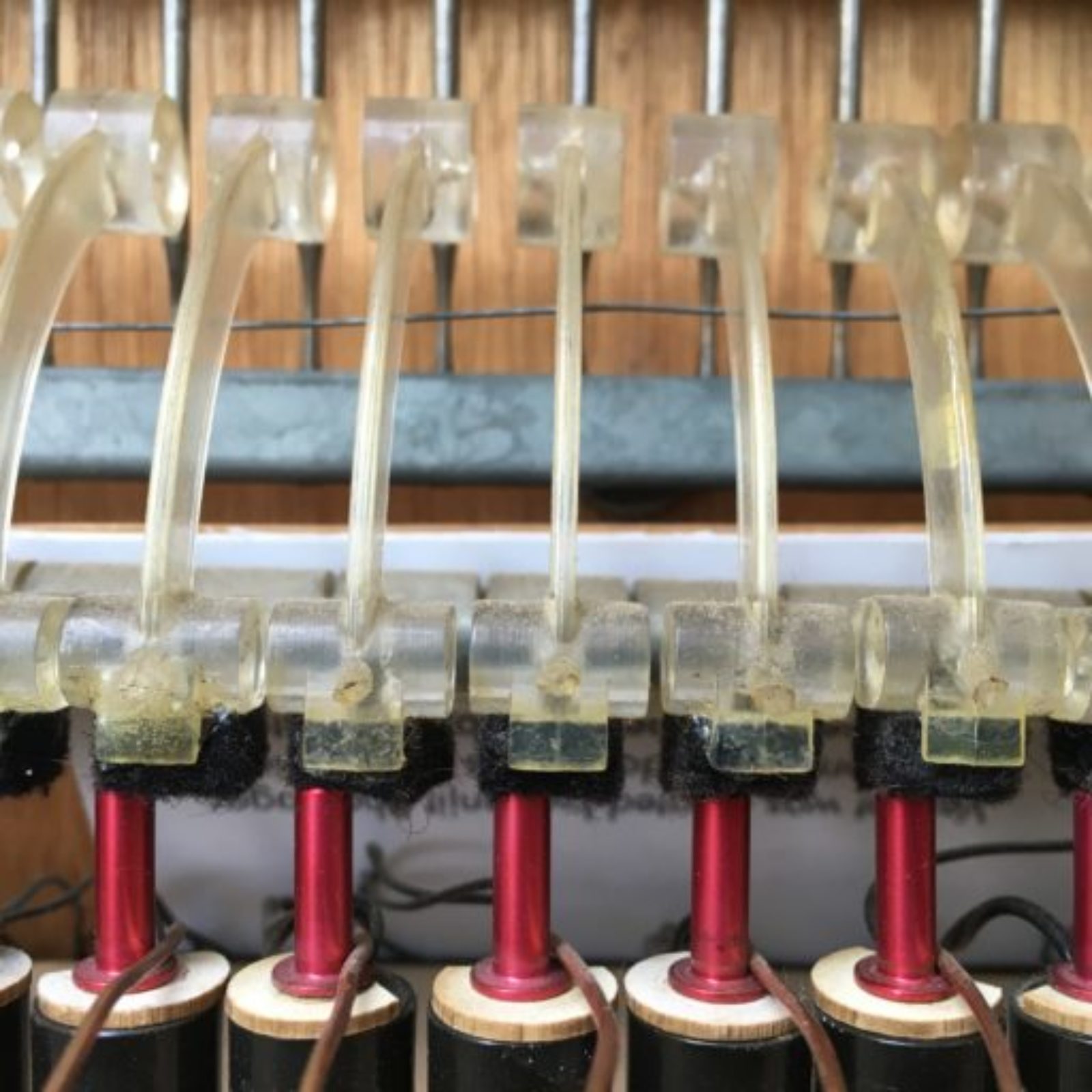Hello! I’m Anthony T. Marasco, and I’m this year’s winner of the UnCaged Toy Piano Call for Scores. I’m extremely excited to join forces with Phyllis Chen to create a brand new composition for toy piano for the 2013 festival. Over the next few months, I’ll be popping in and posting updates to this blog so that you can follow along with the development of the piece and watch its evolution from the very beginning stages to its world premiere in New York City at the end of the year.
So, where do we begin?
I think an apropos place to start this series of posts is with the first major decision I made when I sat down to propose this piece to UnCaged judges: which unconventional instrument would I choose to pair with the toy piano. This was a major element of this year’s call for scores, and I knew that if I couldn’t conceive of a piece that utilized a truly “out of the box” instrument in a practical (yet challenging) manner, then I would be missing the entire point of this year’s theme. As someone who experiments with various preparations to traditional instruments and creates homemade instruments from scratch, I had a ton of options swimming around in my head to choose from. Eventually, I decided to narrow down my options by looking for an instrument that met a few basic criteria:
- The instrument needed to be something that is not traditionally “performed” by human hands, meaning that the initiation of vibration had to come from some other force than physical touch
- The instrument should be something that would seem out of place in any enclosed area, not specifically a concert hall or performance space
- The instrument should be controllable in the same manner that a multi-percussionist can access and manipulate multiple sound sources during a performance
As you can imagine, this set of criteria helped me to cut out a couple of early contenders for the role. With only a few options left, I then began conceiving the extra-musical elements of the piece (more on that in my next post), and finally settled on a hybrid of two instruments that would help me reach my sonic and programmatic goals for the piece: an Aeolian harp/plastorgan, powered by electric fans.
An Aeolian harp is a somewhat “novelty” instrument that is commonly used as an outdoor sound source/lawn ornament; think of it as the less conventional, more complex cousin to your garden variety set of wind chimes. The instrument consists of multiple strings suspended over a hollow, resonating body, similar to a concert harp. When moving air passes over the instrument, the strings vibrate creating a droning, tonal pitch with an airy, ethereal tone color (a quality Henry Cowell emulates in this piece for solo piano). Since Aeolian harps as often meant to serve as a decoration, many of them are built out of elaborately carved wood or metal and can’t be easily tuned. For my purposes, however, a homemade version (using a rain gutter spout for a body!) will be necessary.
Since the Aeolian harp has a somewhat refined and beautiful tone color, I wanted to counter act that with another wind-powered instrument that would utilize an unruly approach to pitch and tone color, and I decided to add a plastorgan choir to my aeolian harp. A plastorgan (known by a variety of other names, depending on who you ask) consists of multiple plastic bottles of various sizes, each with a vertical slit cut into its body and mounted on top of a short wooden pole (an example of the various sounds capable from plastorgans can be found here). When air passes both into and across the slit of each bottle, the resulting vibration creates a resonant sonority distinguished more by register than by pitch. Depending on the size of the bottle, the resulting sonority will fall either in the treble, bass, or middle register. The whistling tone color of the Plastorgan is considerably rougher and unrefined when compared to that of the Aeolian harp and when placed in front of a continuously moving air source (such as an oscillating fan) can produce an entire range of unspecified pitches in a pattern dictated by the speed of the fan’s movements. Each bottle can be individually turned away from the fan in order to stop it from sounding, and the performer has the ability to control the speed of the oscillating fan in addition to starting and stopping its movement.
In the end, I felt that this unique hybrid-instrument would serve as both a complimentary and contradictory sound source for the toy piano, due to its ability to produce a wide variety of pitches (not limited to equal temperament), static drones, sporadic interjections, and a mixture of sophisticated and unrefined tone colors. As I write this, I’m knee deep in the building process of the harp/plastorgan hybrid, and will be sharing some pictures from the work bench in an upcoming post. Thanks for checking in, and be sure to come back for some more insight into the piece in the near future!
